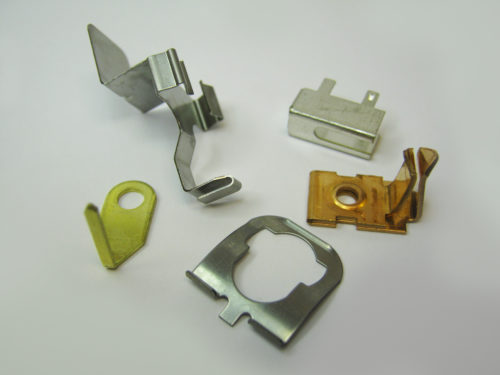Plating is the process of adding another layer of metal onto an existing workpiece for multiple performance benefits, depending on the metal used to plate. At Keats Manufacturing, we know plating has a wide variety of options in both specific techniques and metals corresponding to these techniques for a desired final product. We understand this breadth of choices can be confusing or difficult to choose from.
As a custom metal stamping business, we often perform jobs that either require post-plating or stamp pre-plated pieces, but not in-house plating. Within these many years of working with post-plating or pre-plate stamping, we’ve identified some key issues related to the process of plating your workpiece or production plating project.
The two most common parts of the plating process we lend a hand in are stamping pre-plated material, or sending the stamped piece to an outside source to be plated. Though, keep in mind there is a third option known as partial plating, which is seen as a cost saving measure designed as a compromise between the advantages of the two other options.
Pre-Plating Advantages
 A quick look at some pre-plating advantages:
A quick look at some pre-plating advantages:
- Less material used
- Less costly in terms of labor and material
- Dimensions remain during stamping for finished product
Pre-plating advantages include lower costs, as well as less opportunity for dimensional issues in the finished product. Adding another layer of metal onto a workpiece to plate can add different benefits, a few of which are corrosion resistance, conductivity and even aesthetics. Unlike pre-plating, adding a layer after the part is made can cause dimensional issues mentioned above.
Post Plating Advantages
As a function of the stamping process, a pre-plated part won’t be 100 percent plated after stamping, so for applications with potential exposure to a harsh environment, or applications in which the part is visible and a seamless finish is preferable, post plating may be desirable. This is typically the more expensive option, and with the added handling of the pieces, there is an increased possibility for dimensional concerns to arise. Plating after the metal stamping process, or other changes, will guarantee a fully plated end result.
As with many design and manufacturing considerations, the key is to identify which factors most affect the characteristics of the final product that are most important, and make the decision based on those variables. The benefit (and we would say the beauty) of being a custom manufacturer is that we have the experience and capability to cater to whatever peculiarities the job requires.
Contact the Keats team today for more information on stamping and plating.

